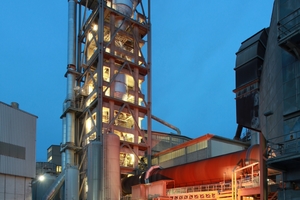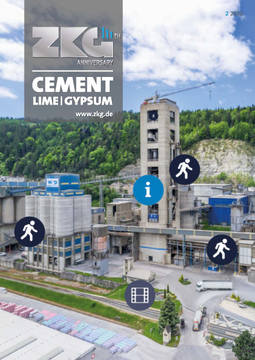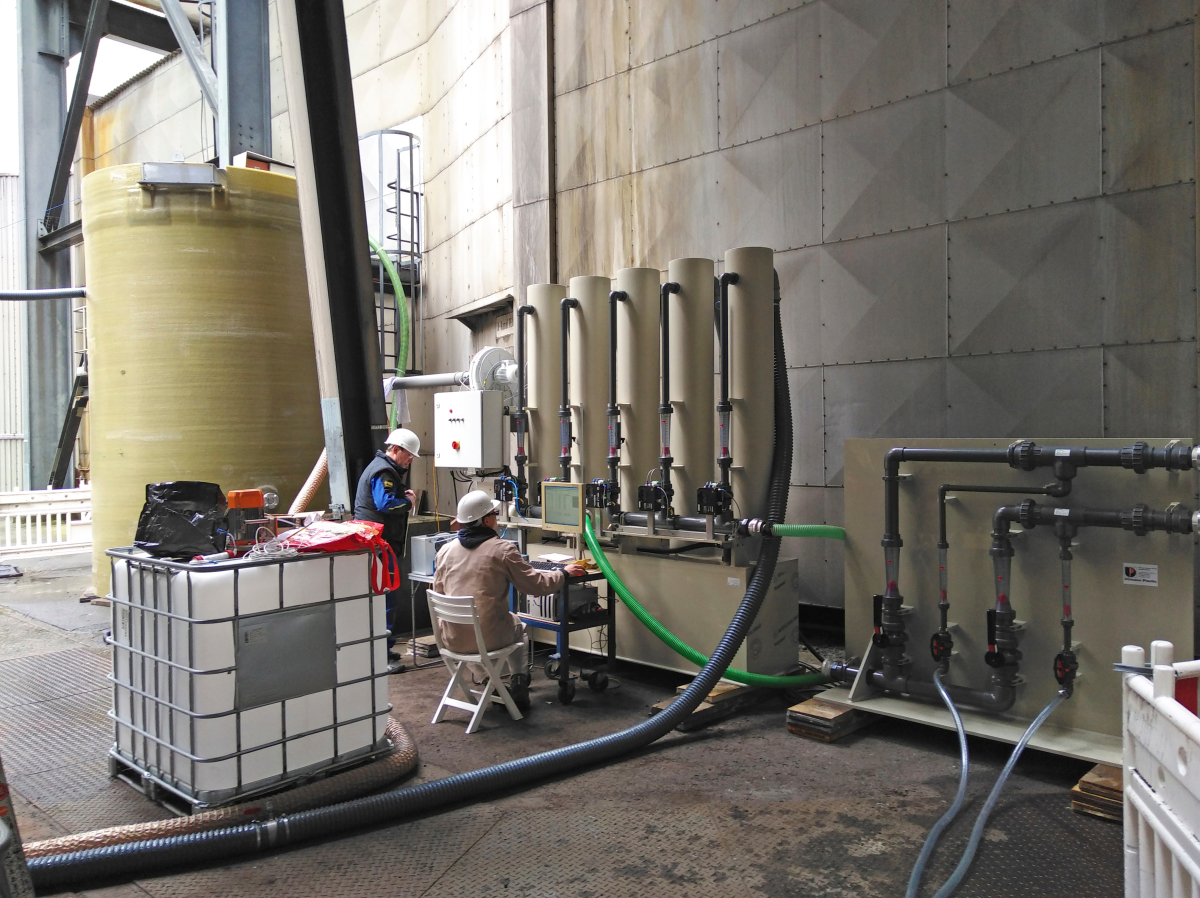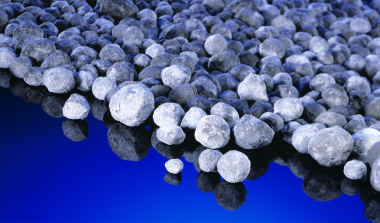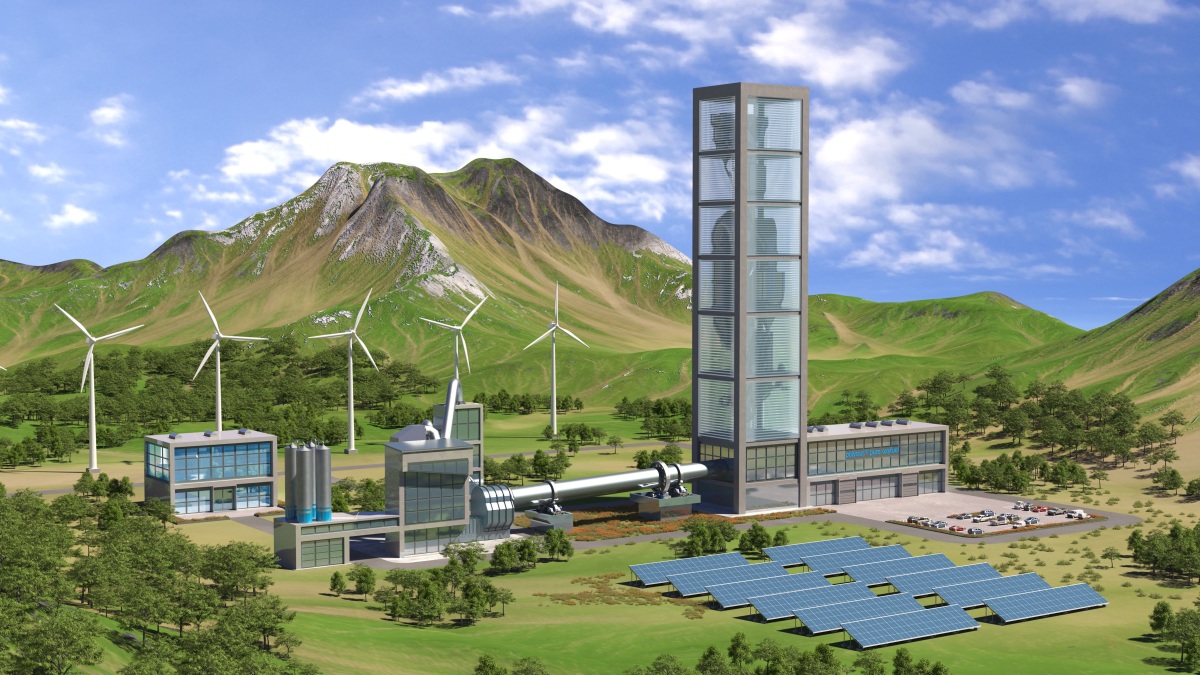Making the cement industry climate-neutral via carbon capture and utilisation (CCU)
In the cement industry, carbon dioxide is an un-avoidable by-product: it is produced when calcium carbonate is burned to calcium oxide and is subsequently released. As a result, the cement industry currently contributes to 4-8% of global CO2 emissions. In the newly launched joint project “CO2-Syn”, partners from industry and science are working on an alternative. They are relying on “Carbon Capture and Utilisation” (CCU) to capture the CO2 and use it as a material – for example, to produce basic chemicals such as olefins and higher alcohols.
The concrete solution developed by Fraunhofer Umsicht, Leuchtstoffwerk Breitungen GmbH, Phoenix Zementwerke Krogbeumker GmbH & Co. KG and the Ruhr University Bochum is called “Power-to-Chemicals”. Renewable energies such as wind power are used to convert CO2 and water into carbon monoxide and hydrogen via electrolysis. Mixtures of these two substances – so-called syngas – are then used to produce the desired chemical products by means of further catalytic conversion processes.
Wanted: robust and poisoning-resistant catalysts
The biggest hurdle: The CO2 released by the cement plants must be elaborately cleaned and conditioned for further processing. “For example, catalyst poisons, dust and other impurities must be removed,” says Dr. Kai junge Puring from Fraunhofer Umsicht. “This is a challenge both technically and economically.”
The project partners’ goal is therefore to create a new process route that can also be adapted by other cement plants. “Ideally, we want to use the CO2 waste gas flows directly to produce the syngas with the help of renewable energies and waste heat sources - without any complex upstream purification and conditioning,” says Dr. Anne Schmidt from Leuchtstoffwerk Breitungen. “For this, we need robust and poisoning-resistant catalysts that are both stable over the long term and economical.”
The researchers are therefore focusing on sulphide-, nitride- and phosphide-based materials. They are very stable to typical catalyst poisons such as sulphur, but have not yet been systematically investigated as potential catalysts for syngas production from CO2 or for subsequent syngas conversion to olefins and higher alcohols. “We want to change that and are aiming to set up a laboratory-scale process in the next 36 months,” explains Prof. Ulf-Peter Apfel from the Ruhr University Bochum.
System integration through multi-criteria evaluation methods
The process is followed by system integration: How can the finished power-to-chemicals concept be integrated into existing cement plant structures? “To answer this, we have to identify, model and evaluate specific site conditions – i.e. infrastructure aspects, surrounding wind and photovoltaic plants or potential customers for the target products,” says Dr. Sebastian Stießel from Fraunhofer Umsicht. “In addition, we have to develop new business models for the marketing of CO2-based products, which we extract from the exhaust gases, and bring them into line with the existing value chains,” adds Marcel Krogbeumker from Phoenix. To this end, new methods for systemic, multi-criteria evaluation are being developed as part of the project. In addition to the purely technical and economic points, this also includes ecological, regulatory, acceptance and site-specific aspects.
From CO2 to olefins and higher alcohols
All these steps are grouped into work packages and clearly distributed: The Ruhr-Universität Bochum and the Leuchtstoffwerk Breitungen are concentrating on catalyst synthesis and characterisation as well as up-scaling. Fraunhofer Umsicht is dedicated to thermal and electrocatalysis and couples both processes. Finally, Phoenix is responsible for process gas analysis and provision as well as – together with the Fraunhofer Institute – system integration.
“Together we are working out an economical way to produce olefins and higher alcohols from the released CO2,” says Dr. Heiko Lohmann of Fraunhofer Umsicht, outlining the objective of CO2-Syn. “They play an important role for industry as basic chemicals or alternative fuels.” For example, the olefin ethylene is an important chemical building block for the production of plastics such as polyethylene or polystyrene. Ethylene is currently produced on the basis of fossil raw materials such as natural gas. The higher alcohols are also important chemical value products. They are used, for example, as solvents and thinners for paints or as fuel additives.

